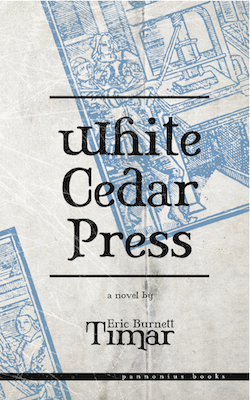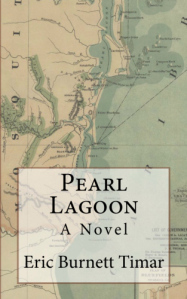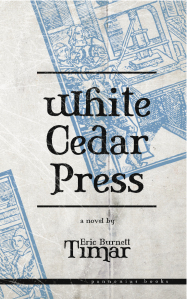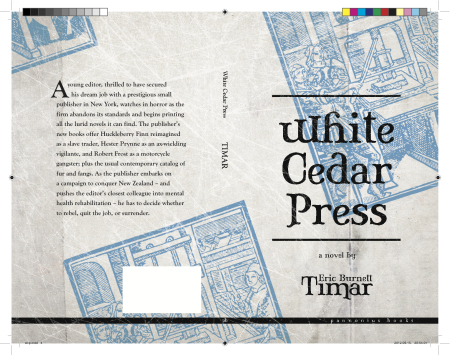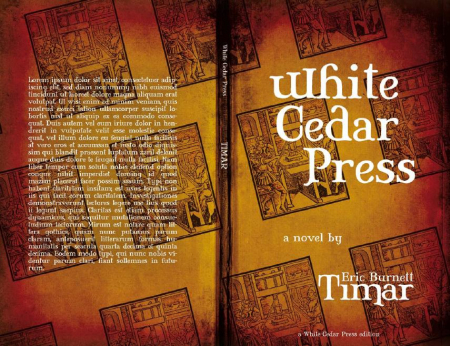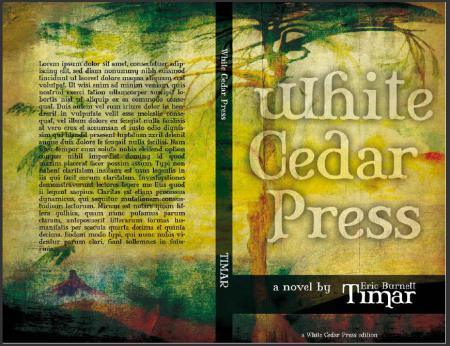Eric Timar's Blog, page 4
December 7, 2012
Youth travel soccer: Trashing the planet
Scary map of an actual U13 travel game below!
Soccer is my favorite sport; I play indoor soccer, and I coach both of my kids’ rec teams, and my daughter now also plays travel soccer. But the arrangement of travel soccer is often insane, because teams of basically equal skills from the same area travel many miles to play far-away teams. The gasoline burned to do this is an environmental nightmare. It’s global warming, stupid, as Bloomberg Businessweek says, and we should be smart enough to fix this.
Here’s an example of a travel game from two months ago in which a U13 team traveled over 100 miles to play. This is in the Washington Area Girls Soccer League (WAGS); their schedules are posted online.
The game took place in Culpeper, Virginia, southwest of Washington DC:
Sat, October 13, 2012
GAME#
Time
Home
Away
Location
14803


2:00 pm
W9977 CPSA Comets U13 girls
1-0
W9906 FSC Wildfire
Culpeper Complex #3
Cupeper Complex address: Greens Corner Road and Cyclone Way, Culpeper, VA 22701
Where did the opponents, FSC Wildfire, travel from? They play home games at two fields; one in Reisterstown MD, and another in Sykesville MD:
14811

5:30 pm
W9906 FSC Wildfire
0-0
W9952 ODFC Hawks
Reisterstown Regional Park Turf #1
Sat, September 29, 2012
GAME#
Time
Home
Away
Location
14822

3:00 pm
W9906 FSC Wildfire
1-0
W9967 OLNY Galaxy
Old Liberty Park
Reisterstown address: 401 Mitchell Drive, Reisterstown, MD 21136
Old Liberty Park: 200 Old Liberty Road, Sykesville, MD 21784
Sykesville is closer to Culpeper than Reisterstown, so I will conservatively estimate that the team travels from the Sykesville area to Culpeper VA: 107 miles, one way. Map below. This is insane. These teams have rosters of 18, so let’s say that’s a dozen cars traveling 2400 miles total, round trip, and burning 96 gallons of gas (at 25 mpg) to do so, thereby releasing over 1800 pounds of CO2. In future posts I’ll show how teams of basically equal skills which are neighbors travel crazy distances instead of just doing the smart thing and playing each other. We need to fix this by starting a “green” travel soccer league.


November 25, 2012
Fonts: A world I didn’t know existed . . .
I would read the “Note on the Font” blurb in the back of a novel now and then, and get a glimpse into the craft of the designers; but not until I searched online did I realize what gargantuan icebergs are submerged beneath those outcrops.
From a current post on a font blog:
“With Quiosco, Cyrus Highsmith continues an examination of themes and possibilities which he first explored in Prensa, inspired by the work of W. A. Dwiggins — specifically a dynamic tension between inner and outer contours. However, the crackling, electrical energy of Prensa here gives way to a more fluid, mercurial muscularity in Quiosco.”
http://www.fontbureau.com/newsletters/2012/11/
Fluid, mercurial muscularity — it does remind me of a description of wine.
And so Paulo takes his fonts very seriously in White Cedar Press (p. 144):
I read the next description:
Tholian font delivers both clarity and enduring charisma. Efficient weighting and conservative widths highlight the functional ornamentation.
“Tholian. Wasn’t that something in an old Star Trek episode?” I asked.
“I am afraid I have not watched this program, my friend,” Paulo said.
I raise my glass to the toiling font designers out there.


October 27, 2012
New fan recognition level added for my readers: “Diamond Cabal of Cronies”
Announcing the restructured levels of support for my books:
1. “Friend of Eric” level
Readers who “like” the books on Facebook, and in general do not hide my posts
1.5 “Lifelong Associate in Triumph” with “Shared Suffering Cluster”
People who list and review on Goodreads
2. “Gold Medal Defender of the Revolution” level
Those who click the “tags” on Amazon, stick up for me in comments when angry readers make fun of me, etc.
3. “Platinum Denizen of the Round Table” level
Write good reviews on Amazon, tell their bookish cousins who have all the cats about my stuff
4. “Hero of the Republic Diamond Cabal of Cronies” level
People who have blogs and cover my books, or who strongarm friends with blogs into doing so; also, people who play soccer with me; and cantaloupe farmers
5. “Shining Standard of Nobility Five-Star Adept”
People from Cleveland
6. “Unparalleled Paragon of Pulchritude”
My wife


October 23, 2012
Airplane reading
“I read this on a long flight. It was a great choice for that.” — From a review of Pearl Lagoon.
On the Caribbean coast of Nicaragua in 1926, U.S. expatriates manage fruit plantations, timber companies, and gold mines. When a stunning local woman named Dorette Fox entangles herself with two Americans, the desultory love triangle combined with an escalating civil war results in murder. Cordell Fletcher, a young U.S. consular officer sent north from Bluefields to investigate the death, finds that the shooting is not over.


October 21, 2012
Ghost story
It’s October again — here’s another ghost story:
“Warner, now that you have me thinking about it,” Paulo said, “I have a ghost story which I should tell you. Would you like to hear it?”
“Certainly,” Warner said. “Is it from Chile?”
“No, it is from El Salvador.” Paulo shrugged. “You know, it could be from Chile. It is something you might hear from several countries of South America, or Central America. But it is from El Salvador. It is from 1983. This ghost was seen by rebels who were living in the countryside and fighting for the FMLN.”
“The leftist revolutionaries.”
“That is correct. This ghost haunted a river in the countryside near where they were camped. The river was on the edge of some woods, and when these soldiers were in the area they would see the dark form of the ghost momentarily before it receded back into the shadows. The ghost reminded them of an old woman. La Ciguanaba, they decided it was. The Hag, you might say; a spirit witch. The men had already heard rumors of her from the locals. The guerrillas were deathly afraid of her; more afraid than they were of the government soldiers. At least they carried guns with which they might defend themselves against the government soldiers, but against La Ciguanaba they could do nothing.”
“And what might she do to them?”
“Well, the fear was that she might abduct one of them and drag him into the woods, forever. That never happened, but she could also paralyze people—and indeed she did, several times. Like a spider poisoning and immobilizing its prey. A man would see her shadow in the woods and would be frozen until a comrade shook him back to consciousness. They had to go on patrols all around the area, so they could not avoid that stretch of river completely, even if they went upstream or downstream at other times to fetch their water.
“I spoke to one of these men personally, Warner, and let me tell you, he was terrified at the time. She was a murky spirit who moved silently. She would usually come out just before dawn or in the twilight; often when the men were a bit sleepy and their minds were ready to play tricks on them in any case. This man I spoke to, he once peered into the woods for many minutes, he said, before walking down closer to the water while on patrol; and only when he had chided himself to stop being afraid did he see the two white eyes staring at him from the far bank. La Ciguanaba haunted that creek for over a year.
“One day a rebel walking from the other direction—through the woods, and out into the clearing—a courageous man—surprised her. She squealed; the first sound anyone had heard her make. With this he became brave, and chased her when she ran off. Eventually she became tangled in brush, could run no further, and was captured.
“She was female, and thin, but not an old woman; she was a young girl. The rebels coaxed her along with them, gave her food, and took her to see their medic.
“It turned out she was a survivor of the massacre at El Mozote, Warner. That was the massacre in 1981 when the Atlacatl Battalion killed eight hundred, nine hundred civilians.”
“Yes, I have read of it.”
“The officers of that battalion were trained in our country, here, you know, not so very far from where we now sit. And this girl survived. She had run away from the government soldiers that night when they came into the village, and she lived off weeds and fish from the river. She had no idea what was going on; no idea what exactly had happened. Whenever she heard gunfire, or explosions—which was often—she assumed the soldiers were back, and killing more people in her home, in El Mozote. Every last member of her family was killed, Warner. Like everyone else in that village they were shot in the head, or had their throats cut open, and then they were dumped in a pit or else incinerated. And this girl knew no one else; there was no one to report that she was missing, no one to care. She lived by that river for a year, as a ghost.”
Warner said nothing.
“There you are,” Paulo finished. “That’s a ghost story for you.”
- From White Cedar Press:


October 11, 2012
Treasure Islands by Nicholas Shaxson
I am finding Treasure Islands, which is about tax havens, dense, but in a good way. There is lots of history of international banking but also entertaining Grisham-esque skullduggery.
Part of the fun is that I’m reading a UK version – it wasn’t clear to me when I bought it, although it explains why there are several versions of the book – and there are a fair number of Britishisms. Things like “spanner” for “wrench” I knew, and a “stitch-up” for a set-up or a construct is easy enough, but I was stumped by “candyfloss”:
“Vast mortgage and credit-card debts have been packaged into great clouds of financial candyfloss”
Clear enough from context, but still, “candyfloss” was new to me. I guessed it was what we call ribbon candy, but it turns out it’s cotton candy. (Floss; candy; candy floss; greedy unethical dental hygiene corporation; your kids will floss longer: Assemble your own joke.)
Another great phrase is “bucket-and-spade tourist destination.” Again, from context the meaning is obviously “established and unassuming tourist destination,” but still, “bucket-and-spade”? I assume that refers to a child’s toy sand shovel and bucket, for a beach? Otherwise it sounds like the vacation might require more work than most people are really hoping for.
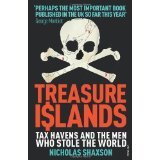


October 5, 2012
The Cleveland Diaspora
Excerpt from the novel White Cedar Press:
I could become another permanent member of the Cleveland Diaspora. I might join people like Michael Dirda, the book critic of the Washington Post. Also Jim Krusoe, a writer, in California I think, who had put out the fine novel Erased. And of course at that time in 2011 I was hearing the song of Mark Foster, of Foster the People, every five minutes—another diaspora Clevelander.
I had talked about the Cleveland outmigration in a bar in New York, a year or so ago. It was with another Clevelander; a guy named James who worked for a nonprofit.
“Do you ever read Ian Frazier’s stuff?” he asked me. “His essays in The New Yorker?”
“He’s one of us, too?”
James nodded. “From Hudson. He’s mentioned it several times, it’s worth looking for.”
“What a brain drain, it’s sad,” I said. “What if we were to all head back there?”
“You and I alone would make that town into Paris,” he said.


October 4, 2012
Plug for my cover artist
The cover I used, and two mockups:
(The graphic of the Gutenberg press was something I asked about.)
These were done by my friend Barnabas. He’d like to do more, for the going rate — you can write to me at the address in “contact” for his address. He actually sent me about ten mockups in all, and was very responsive to my nitpicking about m-dashes and other minutiae.


October 3, 2012
White Cedar Press: Another Excerpt
Chapter Ten: Beverly
So then. Beverly Quan Gianelli. Our star New Zealand novelist, of Chinese and Italian extraction obviously. I have mentioned her a few times.
Her first wonderful contribution to White Cedar was Outback WereCats.
(“Outback?” Paulo had asked me. “She’s in New Zealand. Why is she writing about the outback?”
“Reaching out to the next-door market, I guess?” I answered.
“What’s wrong with her own back yard? It’s like these American soccer teams that call themselves F.C. and A.C. and the rest of it. Real Salt Lake, for God’s sake. It’s sad. Name your club the Bison, or the Turkeys. Take some pride in yourselves.”)
Outback WereCats concerned—well, I’m sure you can guess. There were attractive young people in it. Let’s move on.
I believe I have mentioned the werewolf-vampire genre only very briefly so far, here in this memoir. It is true, however, that we did see much of this sort of material being sent to White Cedar, and getting published as well, once Warner began. I feel it is too easy to spend much time poking fun at it, and probably too dull for everyone, at this point, so I am leaving it alone. Candy from a baby; no sport in it. Also, I do admit, I suppose, that werewolves and vampires have earned themselves some standing in our cultural heritage, just like plucky orphans and self-made entrepreneurs.
Come to think of it, that could be a story, couldn’t it. Gertrude, the plucky orphan werewolf. Wonderful. Or Stan, the self-made vampire entrepreneur.
At any rate, Beverly started it for us; she brought White Cedar into the Werewolf Age. The Auckland office had hired a few more staff members by then, and two of them promptly quit when we began buying Beverly’s books. Rebecca Hampsworth stayed on; Mandy told me she was plodding along in disbelief that Will was ordering these contracts. She had met him on his initial trip, when he must have been the perfect combination of literate progressive, scruffy New Yorker, and appreciative patron. When he started buying the paranormal romances she must have felt like . . . like . . . an analogy escapes me. Like Caesar getting stabbed by Brutus, perhaps. Or in this case it would be more like Brutus getting stabbed by Caesar. Or perhaps Boswell getting stabbed by Johnson. Truman getting stabbed by FDR.
.
Amazon listing:


October 2, 2012
White Cedar Press: Excerpt
In addition to the odd plots we now came across every day, some of the writing from our new would-be authors . . . well, it was not up to our previous standards. I will not dwell on it; I feel evil and mean-spirited whenever I do. I will just include this email from Christine:
From: Christine Wu
To: Tim Craire
Time: March 16, 2011
Subject: Writing exam for our new friends
Dear new White Cedar Press author: Welcome. We are so glad to have you with us. Can you spot which version of a passage of a novel was written by a prominent English novelist?
Version One:
“There are many sheep-dogs on the moor?”
“No doubt, but this was no sheep-dog.”
“You say it was large?”
“Enormous.”
“But it had not approached the body?”
“No.”
“What sort of night was it?”
“Damp and raw. “
“But not actually raining?”
“No.”
Version Two:
“There are many sheep-dogs on the moor?” he asked, inquisitively.
“No doubt, but this was no sheep-dog,” said Dr. Mortimer, shooting him a quizzical glance.
“You say it was large?” came the question, probingly.
“Enormous,” came the answer, eyebrows upraisedly.
“But it had not approached the body?” he continued, confidently.
“No,” Dr. Mortimer said, shooting him a quizzical glance.
“What sort of night was it?” questioned the questioner, penetratingly.
“Damp and raw,” was the answer. He sipped his drink, and the ice cubes clinked in the glass.
“But not actually raining?” came the question, searchingly. Because it was important to know if footprints or other marks might have been washed away by rain. This is why he asked. He wanted to know that. Dr. Mortimer might not have known it was important, but it was.




